Mariana Trench - Definition, Examples, Quiz, FAQ, Trivia
Discover the deepest place on Earth and the amazing secrets it holds
What is the Mariana Trench?
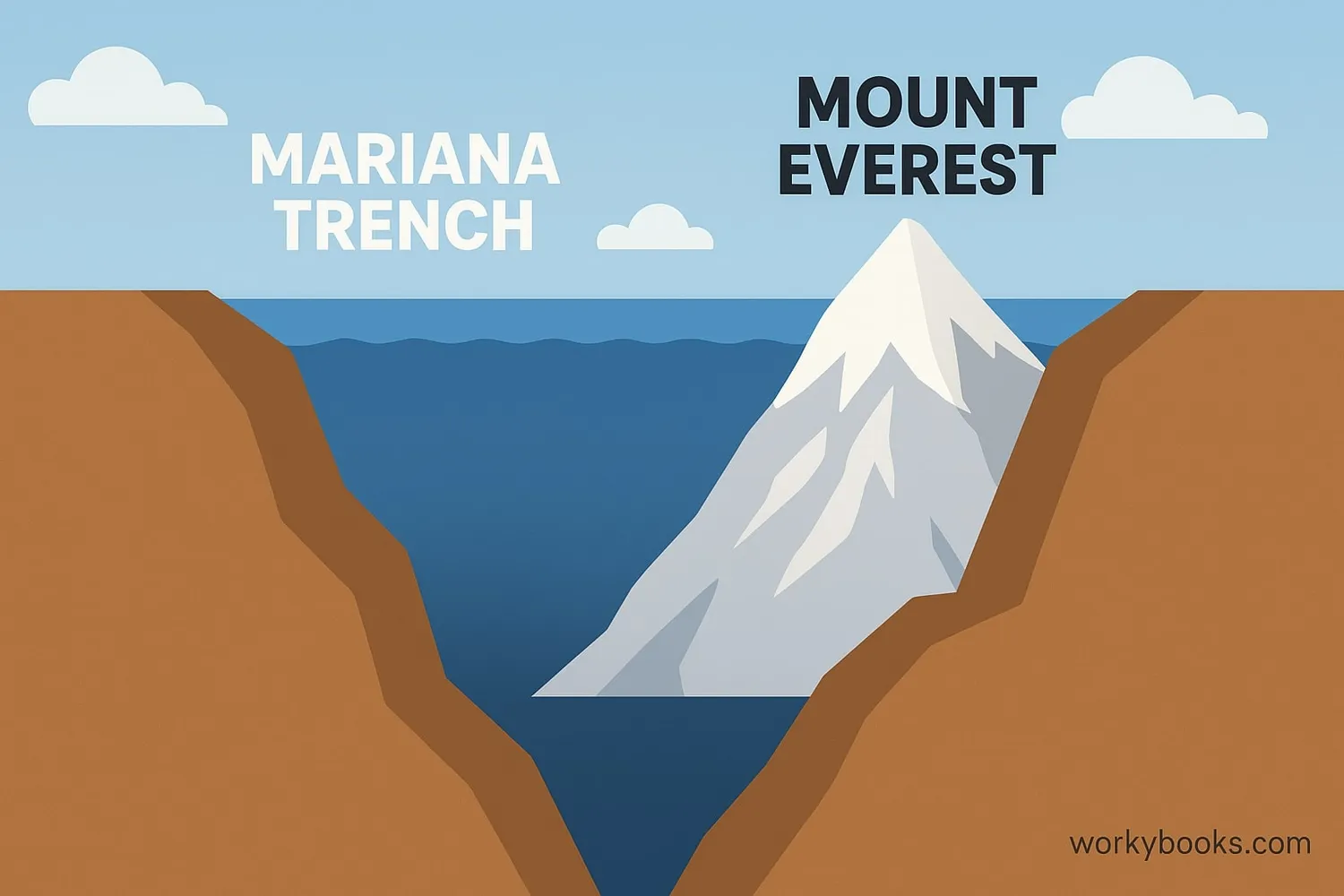
The Mariana Trench is the deepest part of the ocean and the deepest location on Earth! It's a crescent-shaped trench in the western Pacific Ocean that reaches an incredible depth of about 36,000 feet (11,000 meters). That's deeper than Mount Everest is tall!
The trench was formed by the collision of two tectonic plates - the Pacific Plate is being pushed beneath the Philippine Plate in a process called subduction. This creates the deepest point on our planet known as Challenger Deep.
Depth Fact!
If you placed Mount Everest at the bottom of the Mariana Trench, its peak would still be over a mile underwater!
Location and Depth
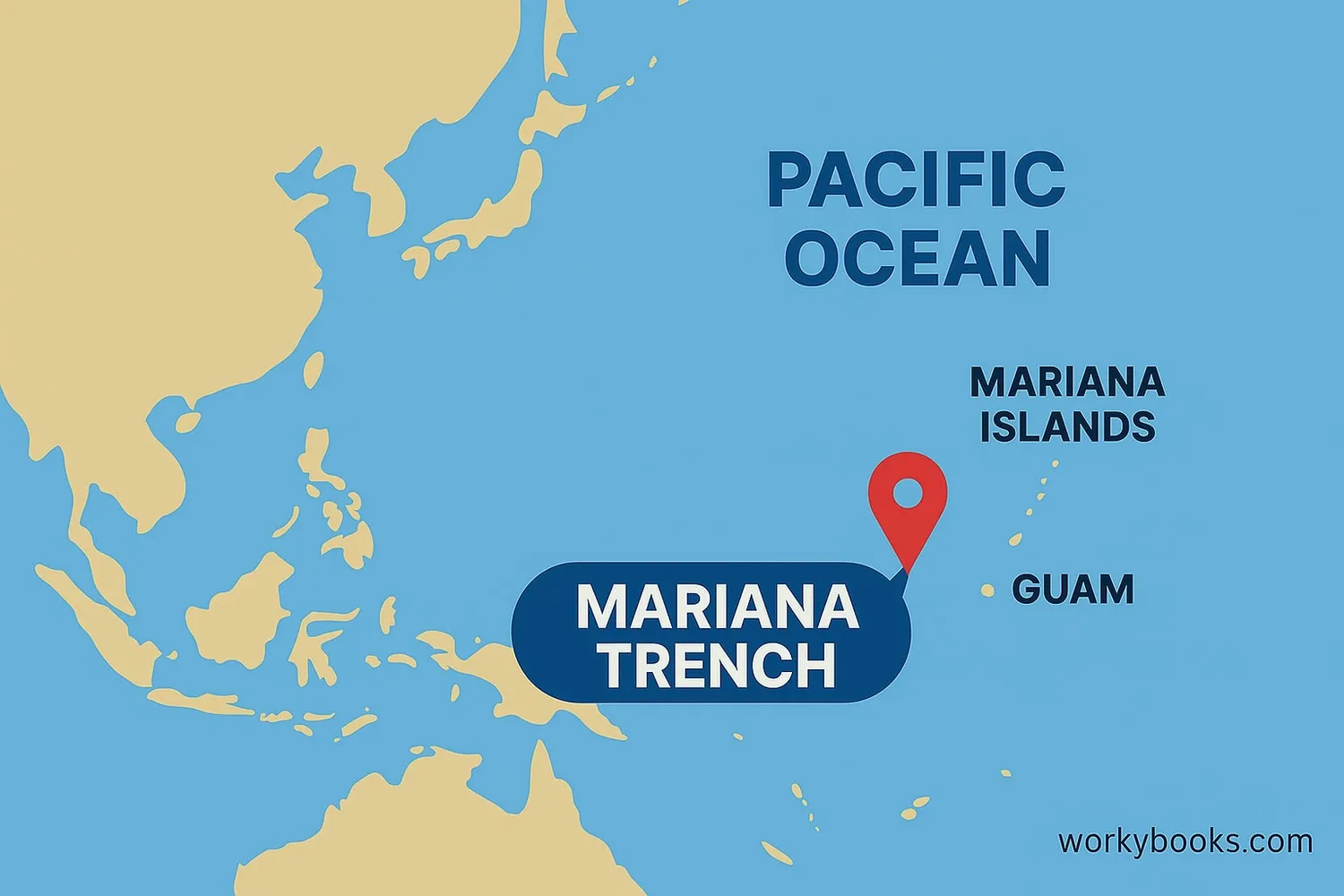
The Mariana Trench is located in the western Pacific Ocean, just east of the Mariana Islands near Guam. It stretches for about 1,580 miles (2,550 km) with an average width of 43 miles (69 km).
The deepest point in the trench is called Challenger Deep, named after the HMS Challenger expedition that first discovered the trench in 1875. Challenger Deep reaches an astonishing depth of about 36,070 feet (10,994 meters). That's so deep that it would take over an hour for a heavy object to sink to the bottom!
Length
1,580 miles long - longer than the distance from New York to Miami
Depth
36,070 feet at deepest point
Pressure
Over 1,000 times normal atmospheric pressure
How Was the Trench Formed?
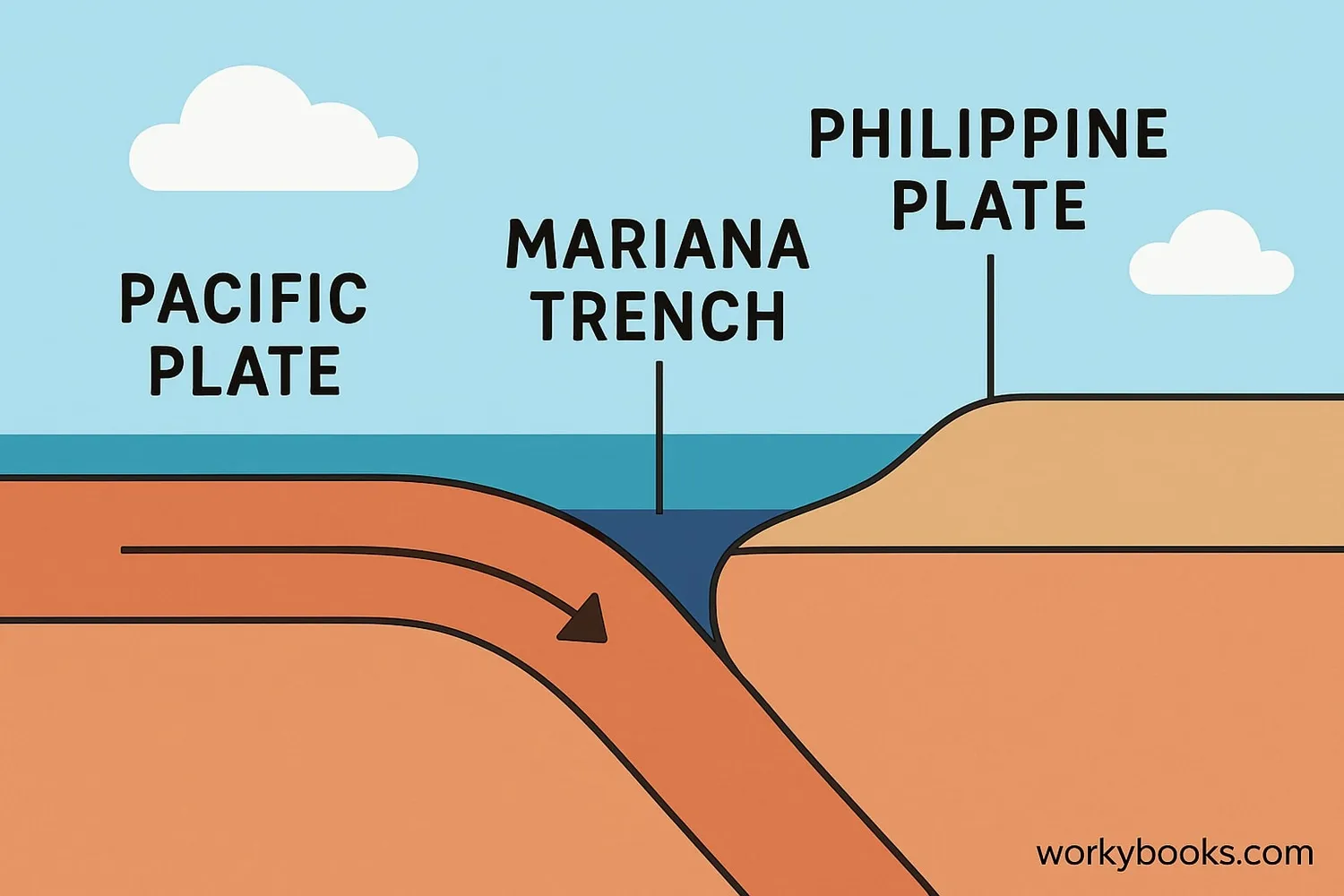
The Mariana Trench was formed by the collision of two massive pieces of Earth's crust called tectonic plates. The Pacific Plate is being pushed beneath the Philippine Plate in a process called subduction.
As the Pacific Plate slowly slides beneath the Philippine Plate (at a rate of about 1-2 inches per year), it creates a deep trench at the boundary. This process also causes volcanic activity and earthquakes in the region.
Plate Movement!
The tectonic plates move about as fast as your fingernails grow - just 1-2 inches per year!
Life in the Deep Sea
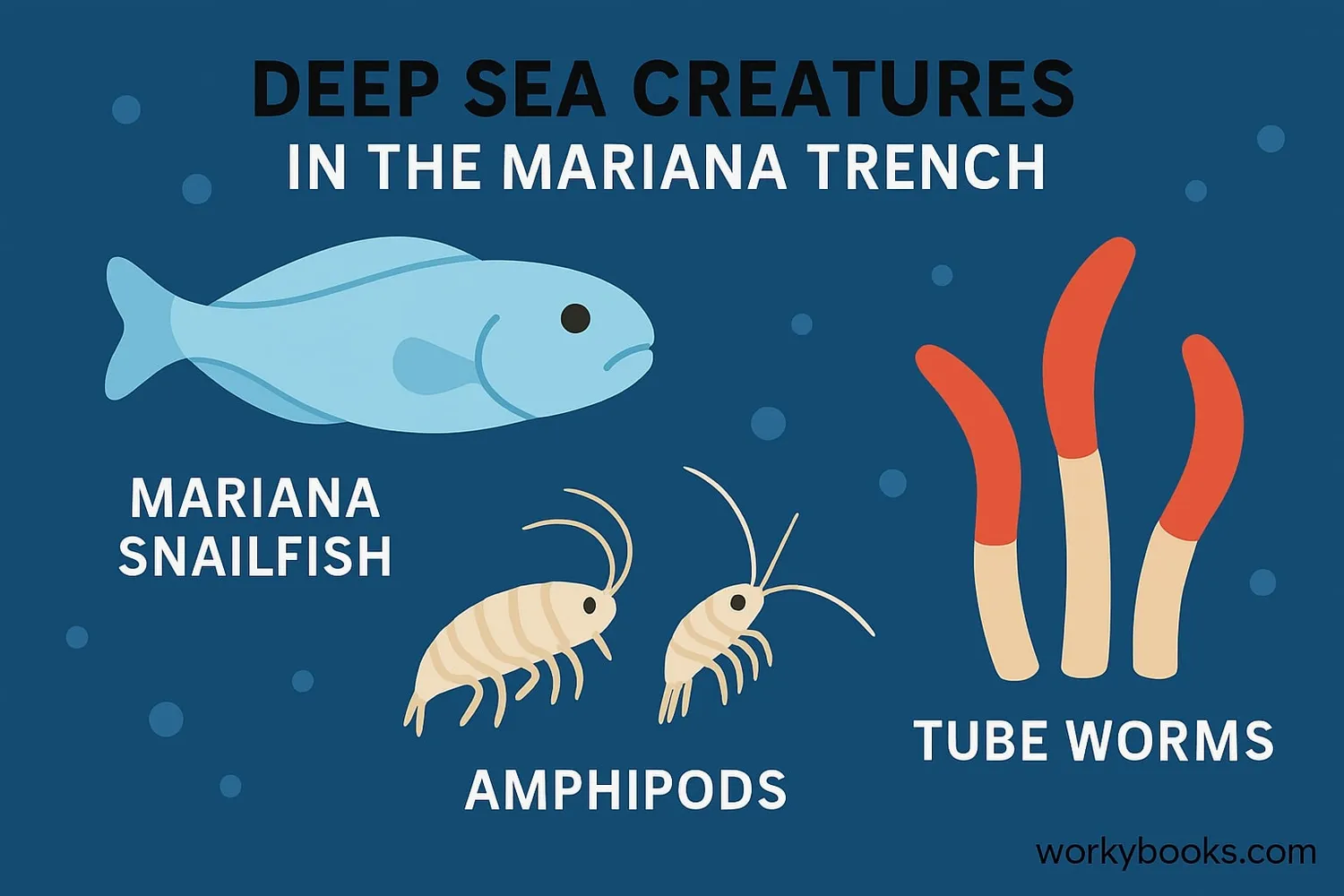
Despite the extreme pressure, darkness, and cold temperatures, life thrives in the Mariana Trench! Specialized creatures have adapted to survive in these harsh conditions:
• Mariana snailfish - the deepest living fish ever discovered
• Giant amphipods - shrimp-like creatures that scavenge for food
• Xenophyophores - single-celled organisms as large as your hand
• Tube worms and other organisms around hydrothermal vents
Extreme Conditions
Near-freezing temperatures, complete darkness, and crushing pressure
Special Adaptations
Creatures have flexible bones, special proteins, and slow metabolisms
Food Sources
Most food comes from "marine snow" - organic material drifting down from above
Exploration of the Deep
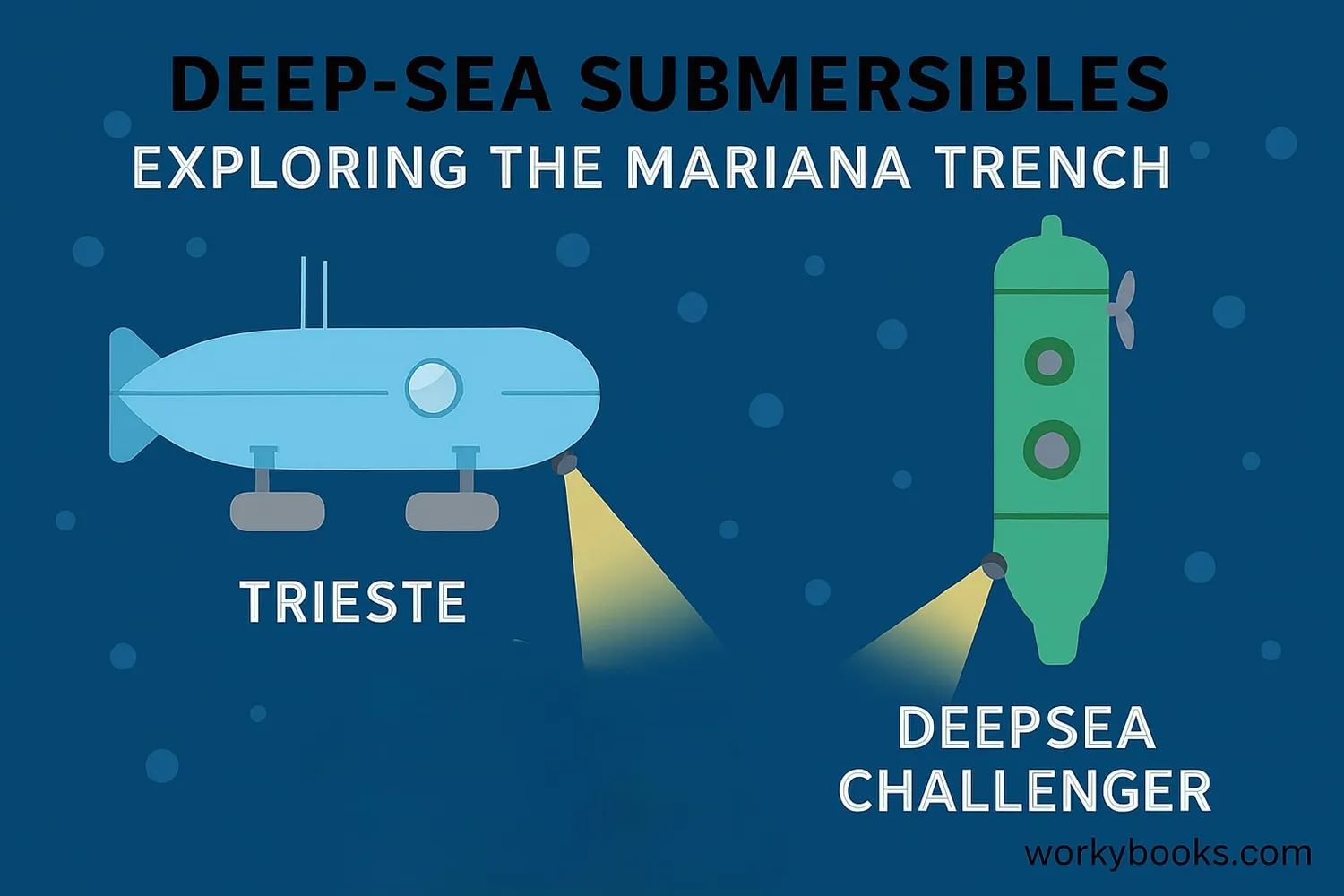
Exploring the Mariana Trench is incredibly challenging due to the extreme pressure and darkness. Only a few manned expeditions have reached the bottom of Challenger Deep:
• 1960 - Jacques Piccard and Don Walsh in the bathyscaphe Trieste
• 2012 - Film director James Cameron in the Deepsea Challenger
• 2019 - Victor Vescovo reached the bottom in the DSV Limiting Factor
These explorations have helped scientists discover new species and learn more about how life survives in extreme environments.
Pressure Challenge!
The pressure at the bottom of the trench is like having 50 jumbo jets stacked on top of you!
Mariana Trench Quiz
Test your knowledge about the Mariana Trench with this quiz!
Frequently Asked Questions
Here are answers to common questions about the Mariana Trench:
Fascinating Trivia
Discover amazing facts about the Mariana Trench!
Extreme Pressure
The pressure at the bottom of the trench is over 1,000 times the pressure at sea level - equivalent to having 50 jumbo jets stacked on top of you!
First Exploration
The first crewed descent to Challenger Deep was in 1960 in the bathyscaphe Trieste. The explorers reported seeing flatfish and shrimp at the bottom!
Deepest Life
The Mariana snailfish holds the record for the deepest living fish ever recorded, found at depths of 26,830 feet (8,178 meters).
Unexpected Pollution
Explorers have found plastic bags and candy wrappers at the bottom of the trench, showing that human pollution reaches even the most remote places on Earth.


